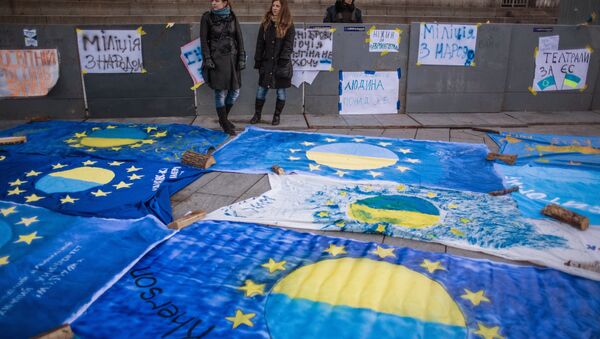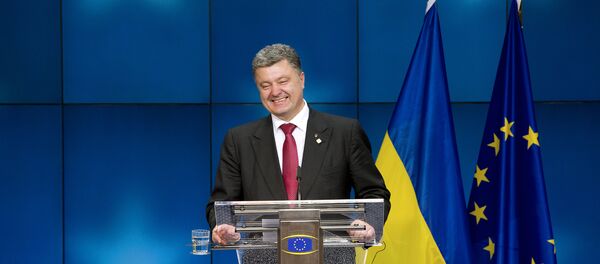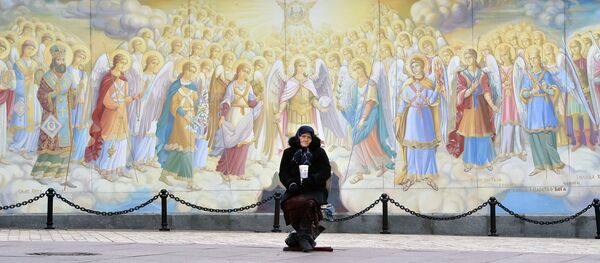A hope for lasting peace in Ukraine turns on implementation of the Minsk accords, signed one year ago. As Kiev stalls and its Western sponsors succumb to Ukraine fatigue, 2016 may become a crucial year.
The Minsk II accords (called so because they replaced the earlier Minsk agreements) were signed on 12 February 2015 between the Kiev authorities and the unrecognized Donetsk and Lugansk republics after heavy fighting. Ukraine undertook to complete the Minsk process in 2015, but failed to meet the deadline. Is there a chance that will happen in 2016?
The Minsk accords grew out of the chaotic and tragic events of the Ukrainian civil war that followed the February 2014 overthrow of president Viktor Yanukovych by the Maidan protesters (also called Euromaidan to distinguish from the previous Maidans).
Yanukovych was lawfully elected in 2010 in free and fair elections recognized as such by the West.
The Ukrainians had estimated that joining the EU free trade zone would be too costly for them, eliminating whatever high-value exports the country still had, and turning it essentially into a commodity appendage to the EU over time. Ukraine asked for the signing to be moved back a few months so it could review its options.
But the EU negotiators essentially gave Yanukovych an ultimatum: sign now or face the consequences. Yanukovych didn't heed the warning and paid dearly for that.
Before the Euromaidan Ukraine’s political system had been suspended in a fragile balance between the country’s east and west.
While Ukrainian, predominantly spoken in the west, enjoyed a legal monopoly for all official business in the country, Russian, mostly spoken in the east and deprived of any legal recognition, held its ground against the many years of Ukrainization, continuing as a de facto language of choice for the majority.
The Euromaidan, by violently seizing power, upset that balance. As Yanukovych fled the country, the east and west of the country erupted in protests. What was behind them was not a nostalgia for the discredited president, but a realization that a democratic political process had been subverted.
A minority, unable to win at the ballot box, now claimed a right to seek power through street violence. Protests in the south were put down relatively quickly by the Kiev authorities now supported by the West (witness the Odessa burning massacre of 2 May 2014). But the Donbass proved a harder nut to crack.
First the rebellious Donbass republics asked for autonomy within Ukraine, but when the new regime responded with a crackdown in April 2014, they held a plebiscite in May 2014 that proclaimed their independence.
Kiev sent the army and Maidan paramilitaries to crush the rebels, but in the resulting fighting Kiev suffered defeats and was compelled to sign a ceasefire agreement in Minsk in September 2014.
On February 12, 2015 Ukraine and the rebels signed the new Minsk accords (Minsk II), ending the fighting. Kiev declared its army the greatest in Europe and the vanquisher of Russia, but had no desire for more punishment. The rebels were restrained by Moscow from further advances.
A fragile peace, punctuated by skirmishes, has held. Under Minsk II Ukraine pledged a constitutional reform that would see a form of home rule for the Donbass. But that proved to be the stumbling block for the Kiev regime. The Ukrainian parliament, packed as it is with radicals from the post-Maidan flawed elections, balked at the proposal.
The radicals saw Minsk II as a defeat and betrayal. After all, if the rebels’ original demands for autonomy are to be met, what was the point of the murderous war that Ukraine has prosecuted to such great cost to itself?
Ukrainians, tired of the war and mauled by the collapsing economy, are increasingly turning away from Maidan politicians.
Future elections will likely return a legislature more amenable to peace. By Poroshenko’s calculation, he will get the laurels for winning the Donbass back for Ukraine, a second presidential term and the opportunity to get on with more pressing business. That is what we are likely to see this year.





